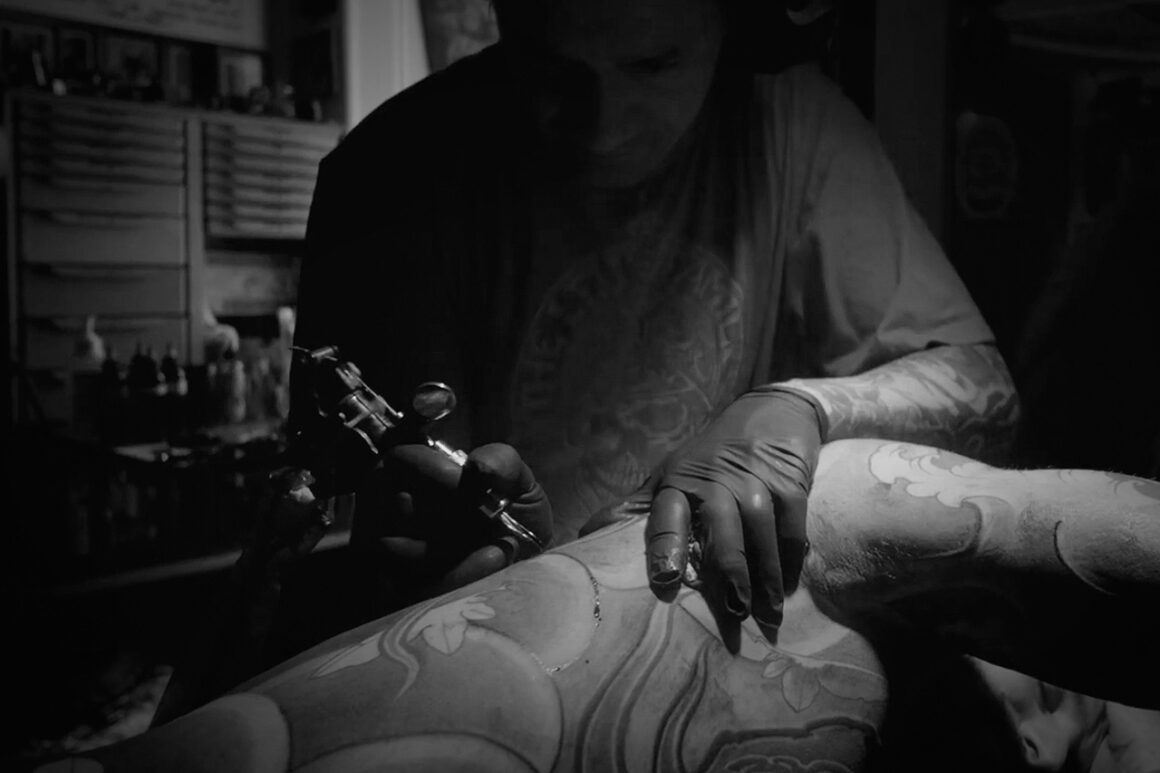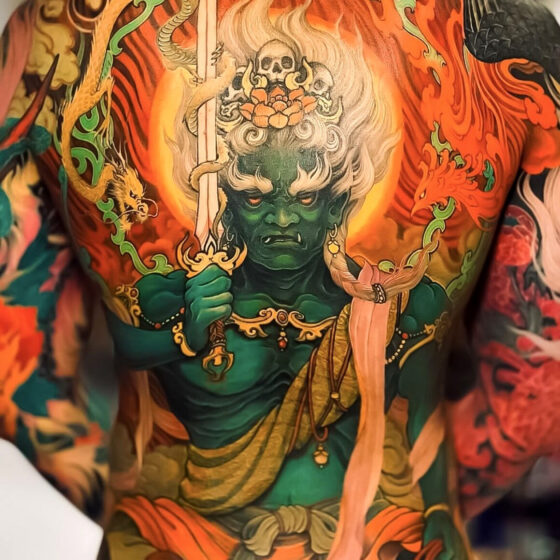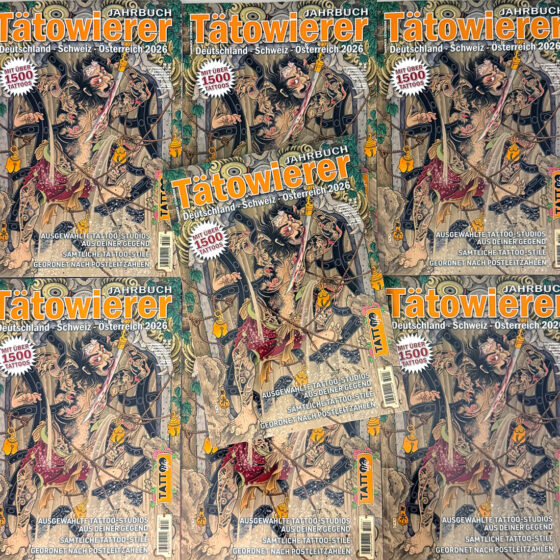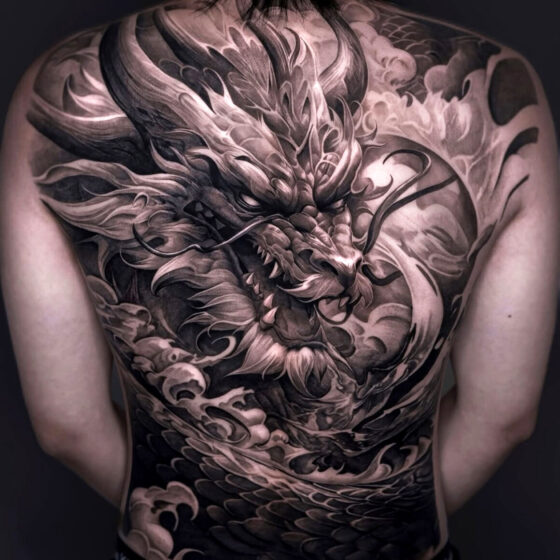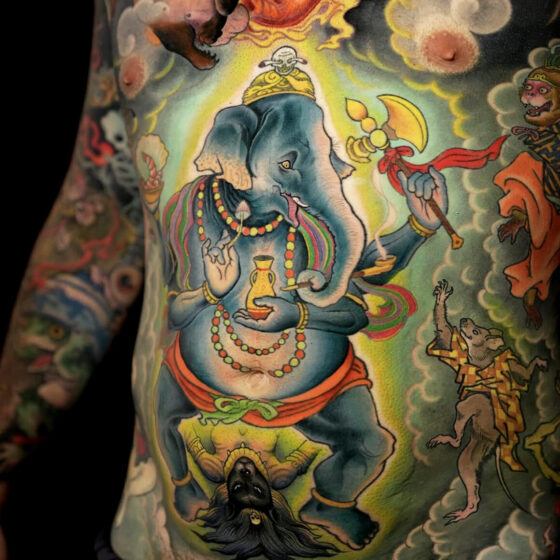The Grim Reaper is known as the personification of death across many Western mythologies, depicted holding a scythe and thought of as something fearful that collects people’s souls.
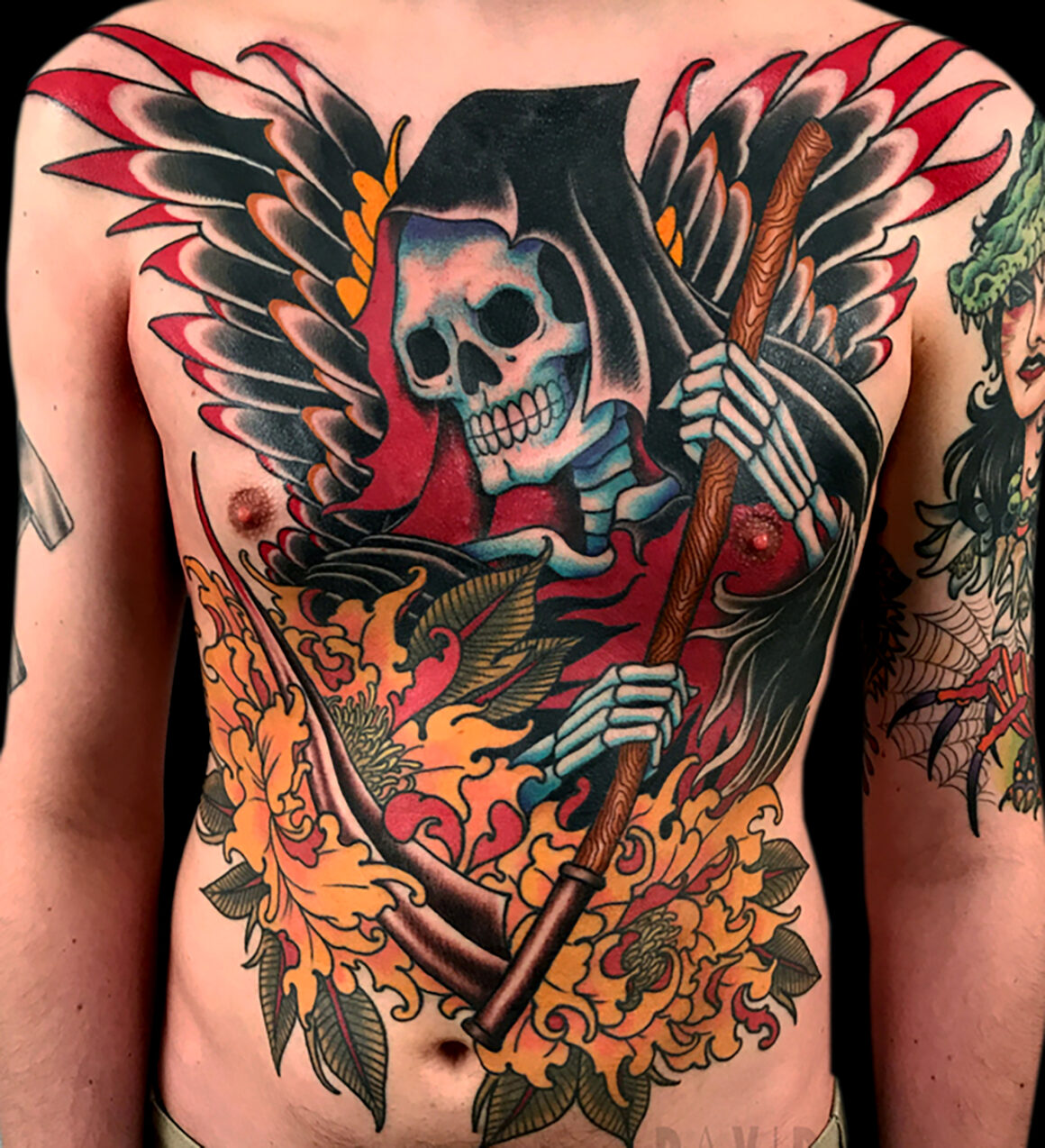
It seems to have appeared in Europe in the 14th century during the world’s worst pandemic, the Black Death.
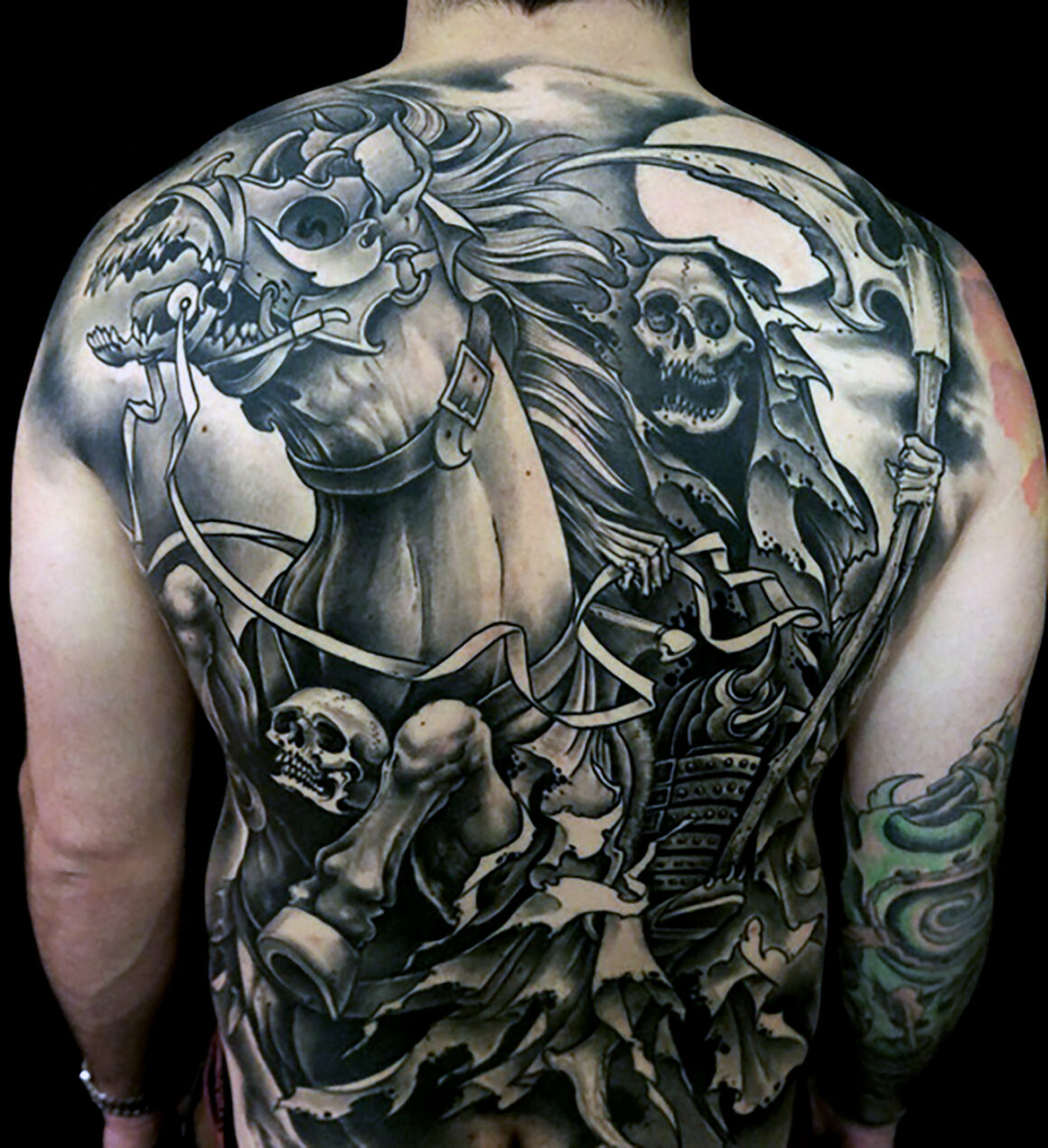
It is presented as a skeleton, symbol of death, representing the human body after it has decayed. It wears a robe that is a reminiscent of the robes that religious figures of the time wore when conducting funeral services.
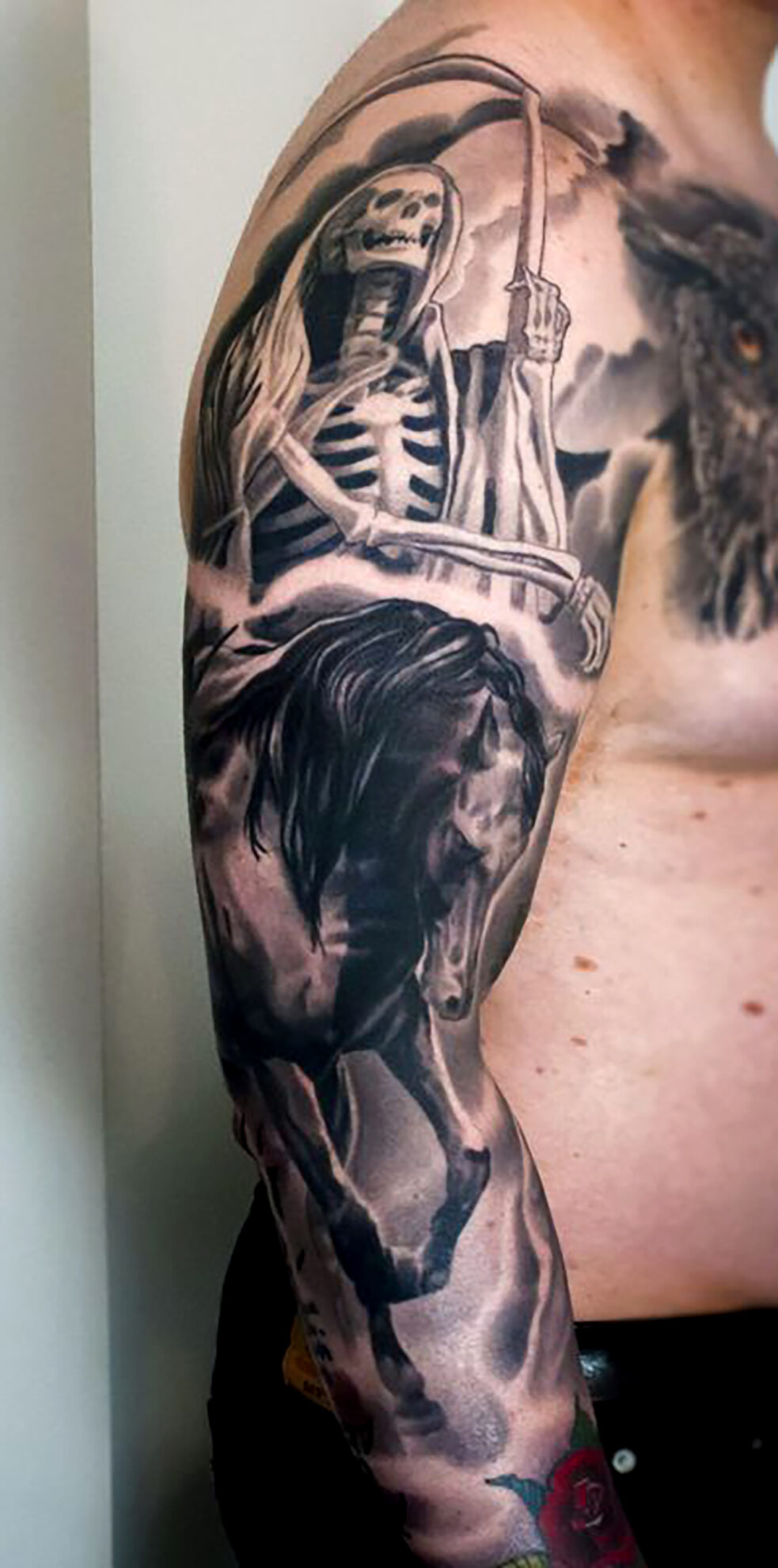
The scythe is an apt image taken from agricultural practices of the time: harvesters used scythes to reap or harvest crops that were ready to be plucked from the earth. Which is fundamentally what occurs when humans die: they are plucked from this earth.
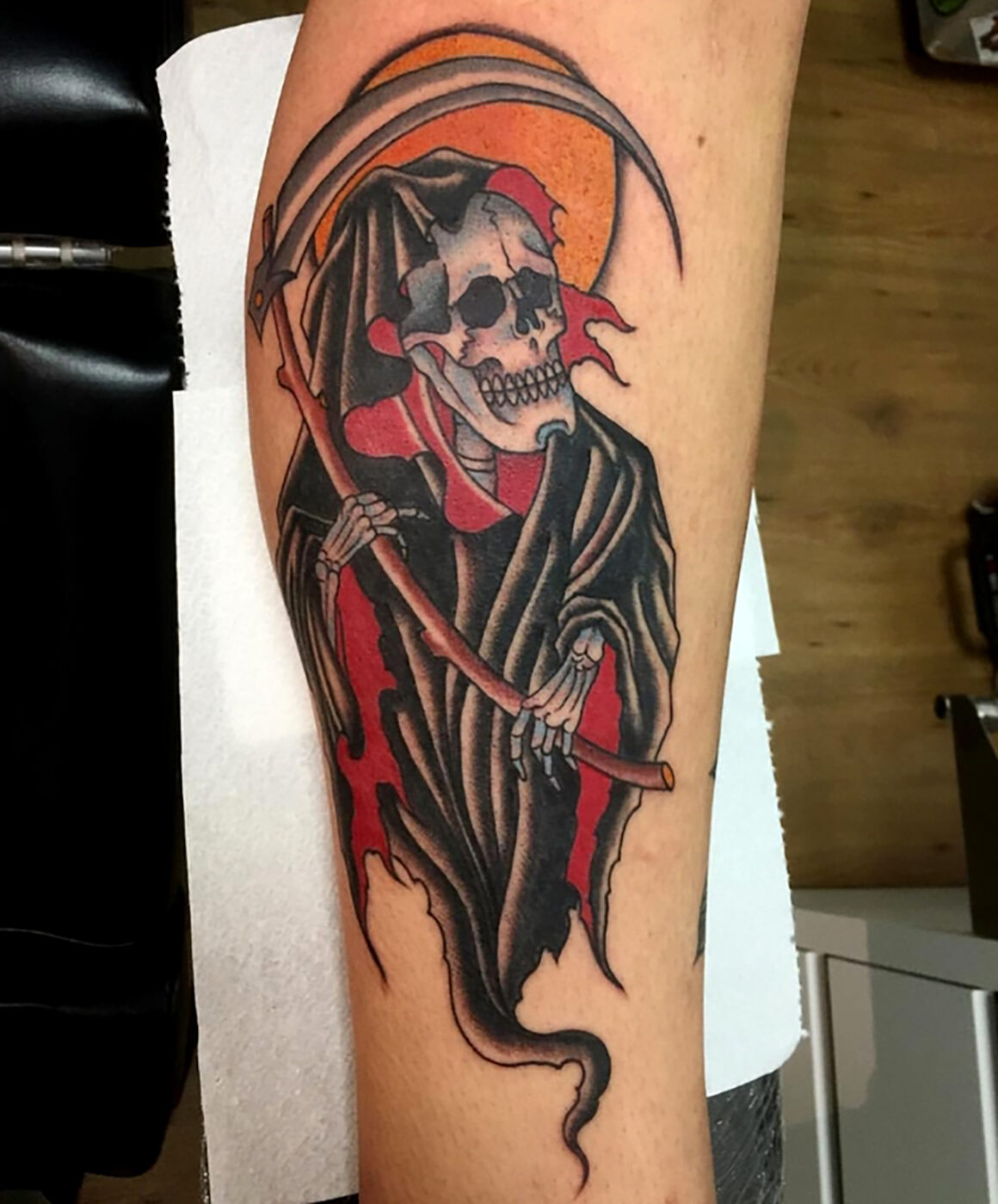
In some mythologies, the Grim Reaper actually brings about the death of the victim by simply coming to get them and taking them to hell.
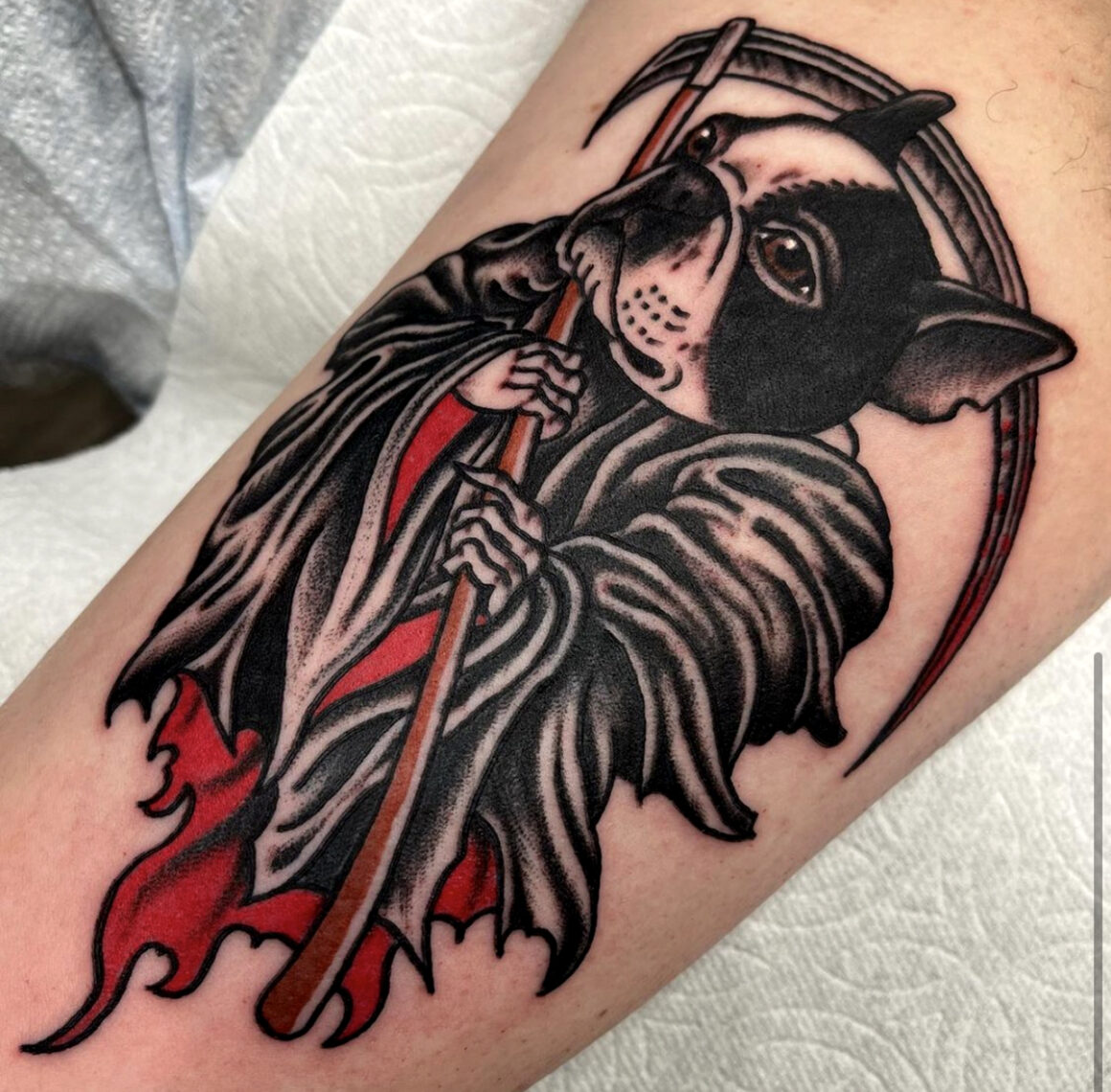
But there are also those humans who try to cling to life and avoid the visit of Death, or defend themselves from Death, offering money or other precious possessions or using trickery in a vain attempt to evade ITs invincible touch.
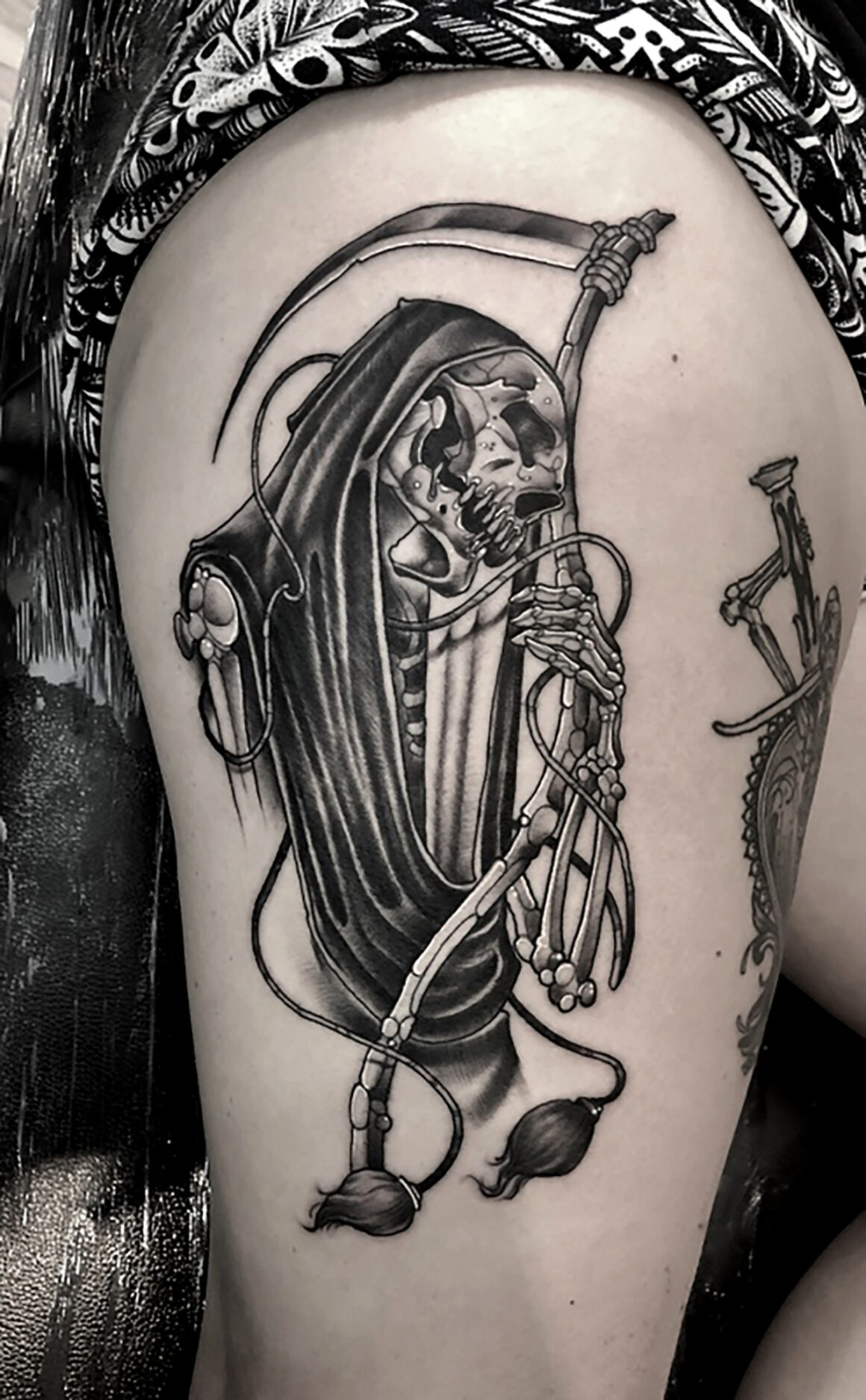
While the Grim Reaper is not a Christian figure or mentioned in the bible, it is not uncommon to see skeleton imagery in churches across Europe.
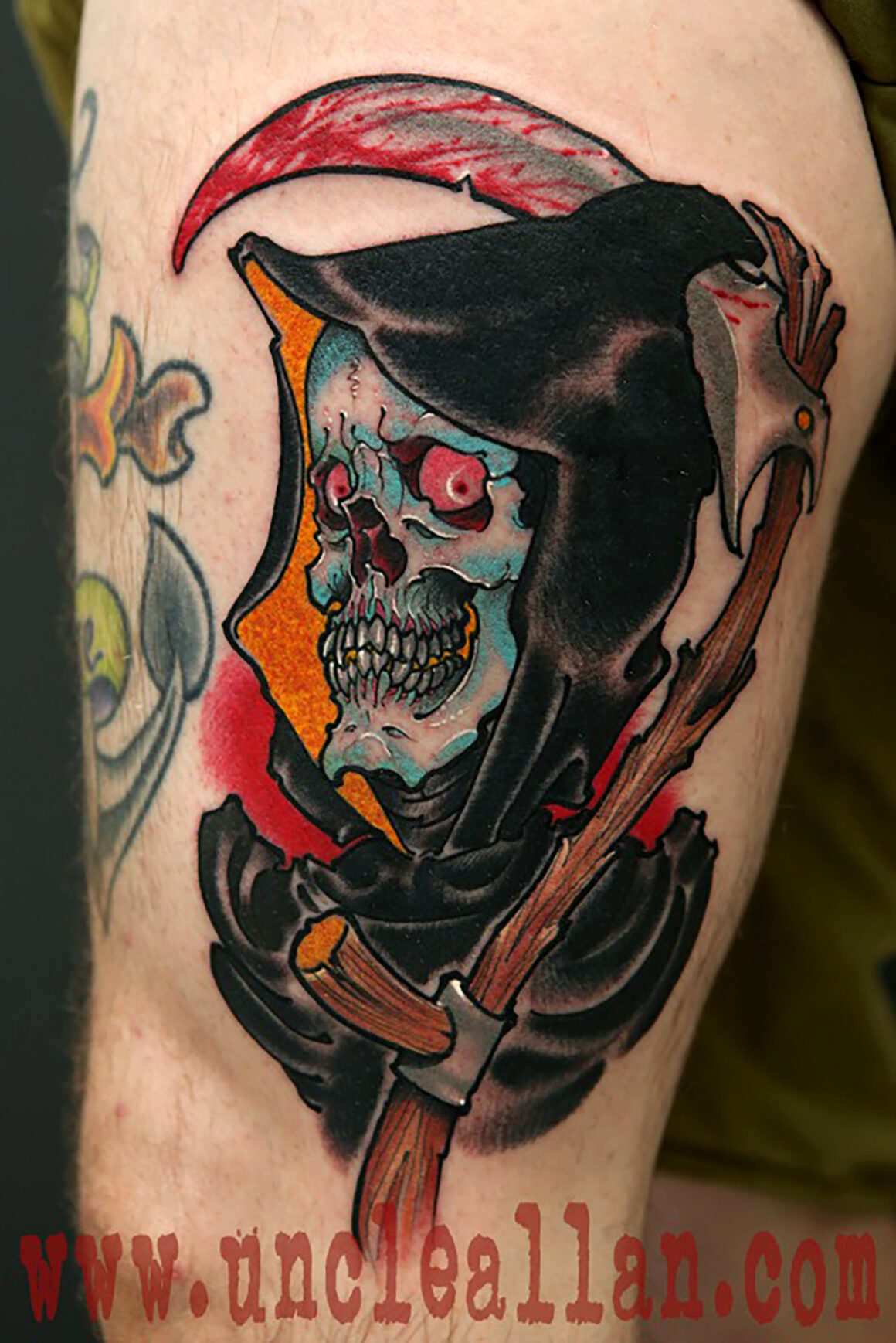
In contrast, Japan’s Buddhist tradition heavily influenced the country’s view on the skeleton. For the Japanese, skulls and skeletons represent the natural cycle of life and a letting go of superficial desires.
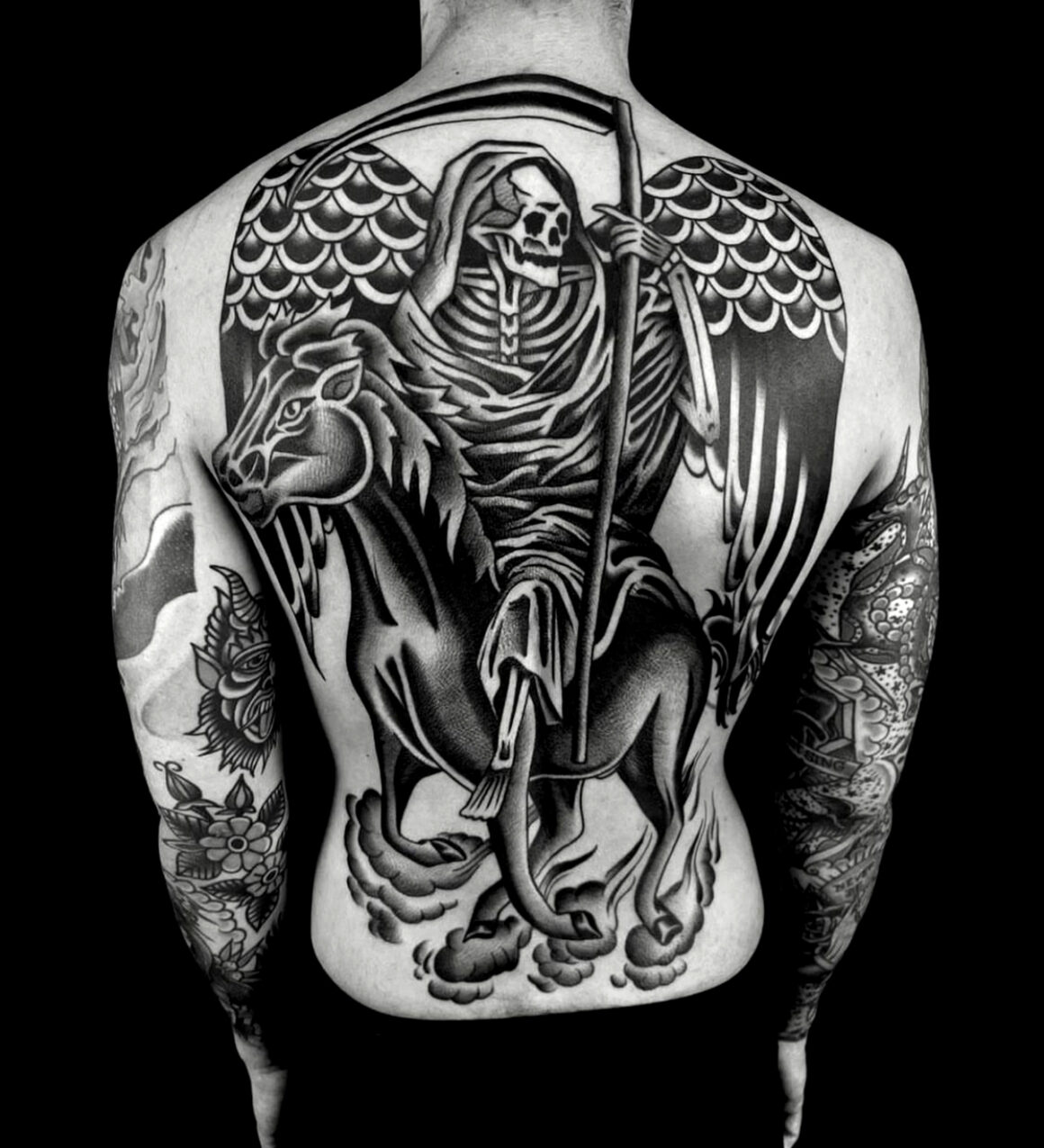
In tattoo it appears in many styles and draws on the symbolism of the cultures in which it is used ranging from American Traditional to Japanese where it is more similar to a demon and disquieting spirit or skeleton stripped of ITS shrivelled old flesh.
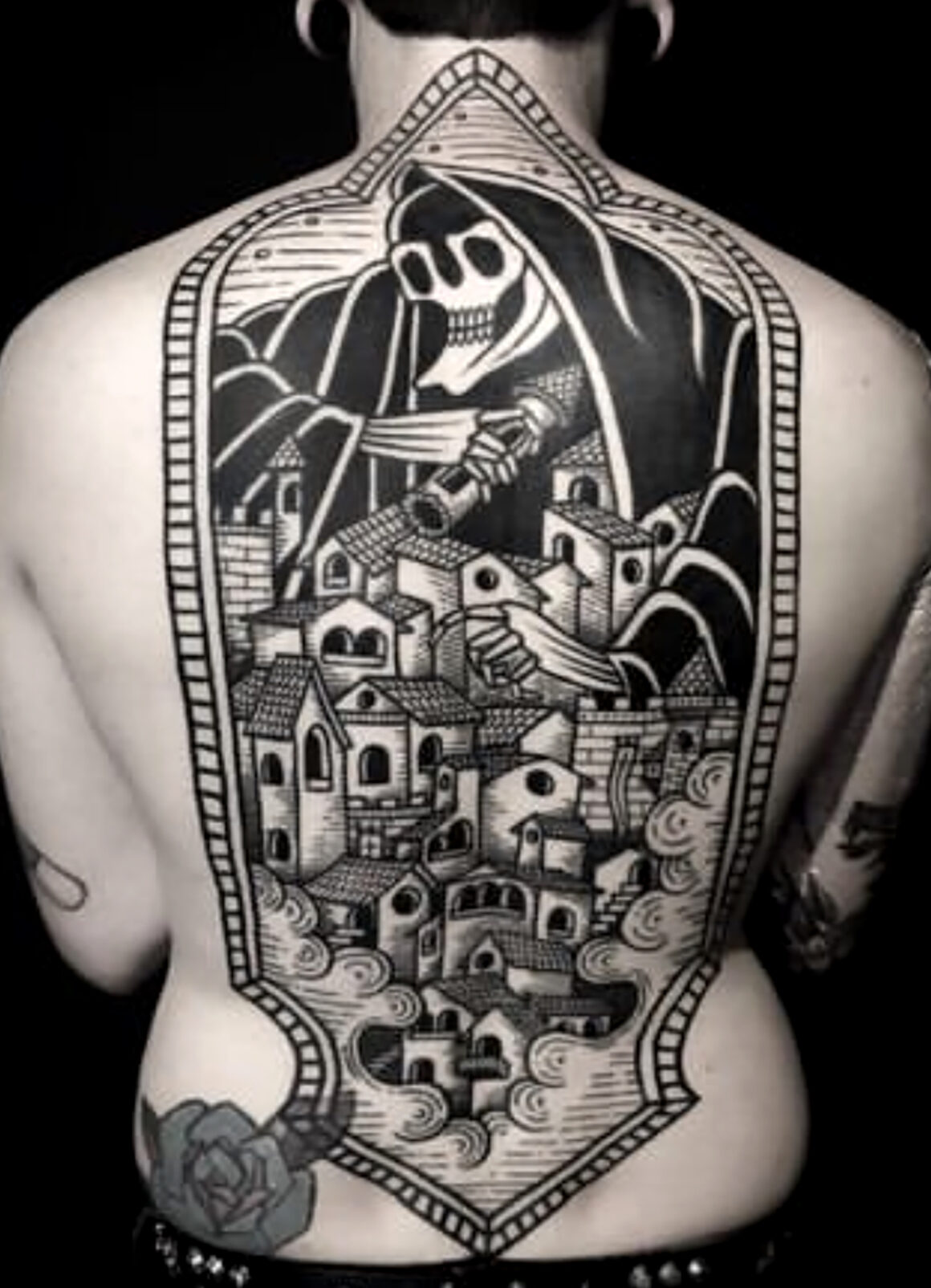
The Grim Reaper is undoubtedly used to best effect in that vein of Black’n’Grey dark horror Realism and has more of a colourful pulp feel in New School.

Little details which give such an easily recognisable image a fresh look depending on the hand of the artist who executes the tattoo.
